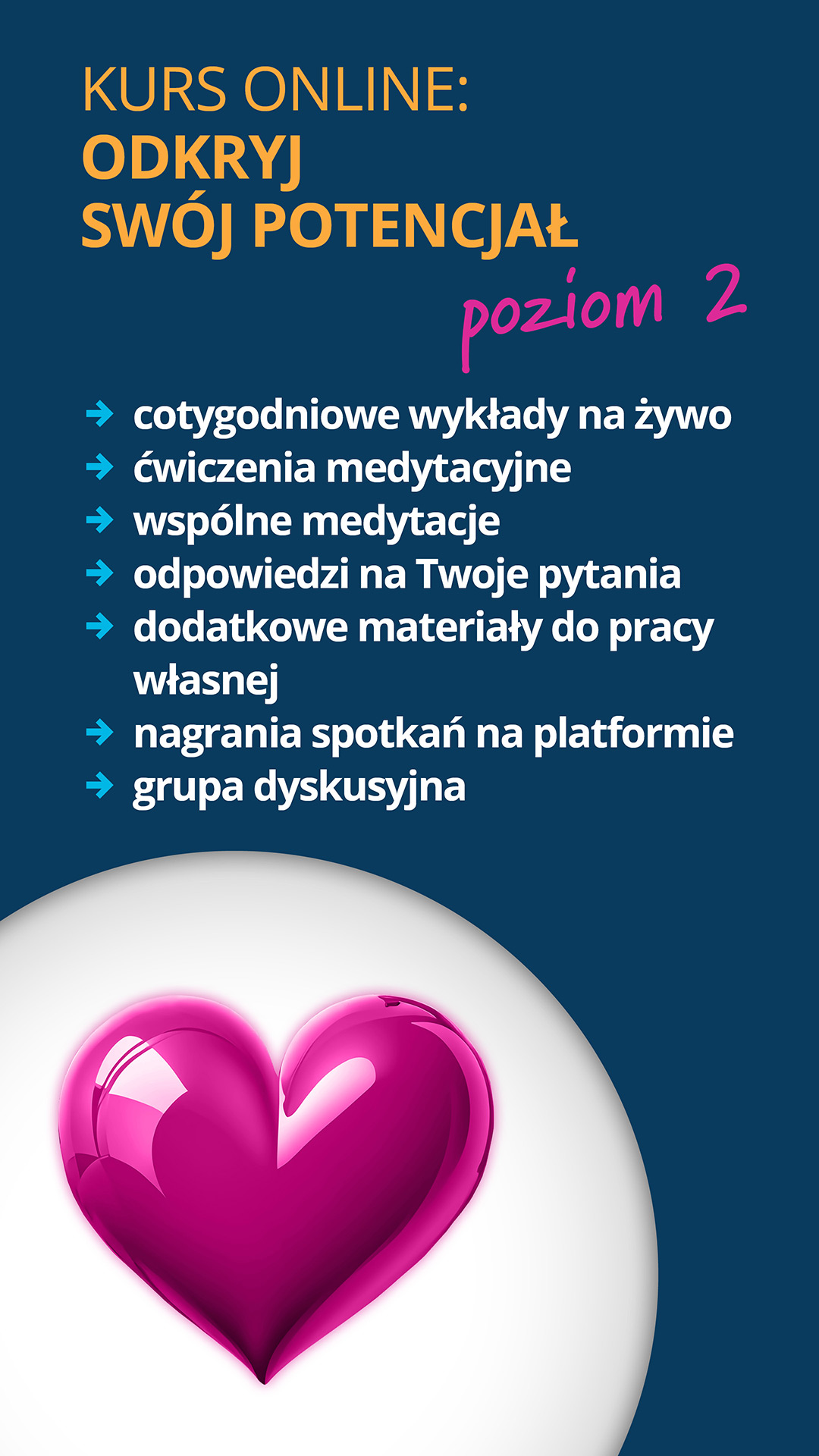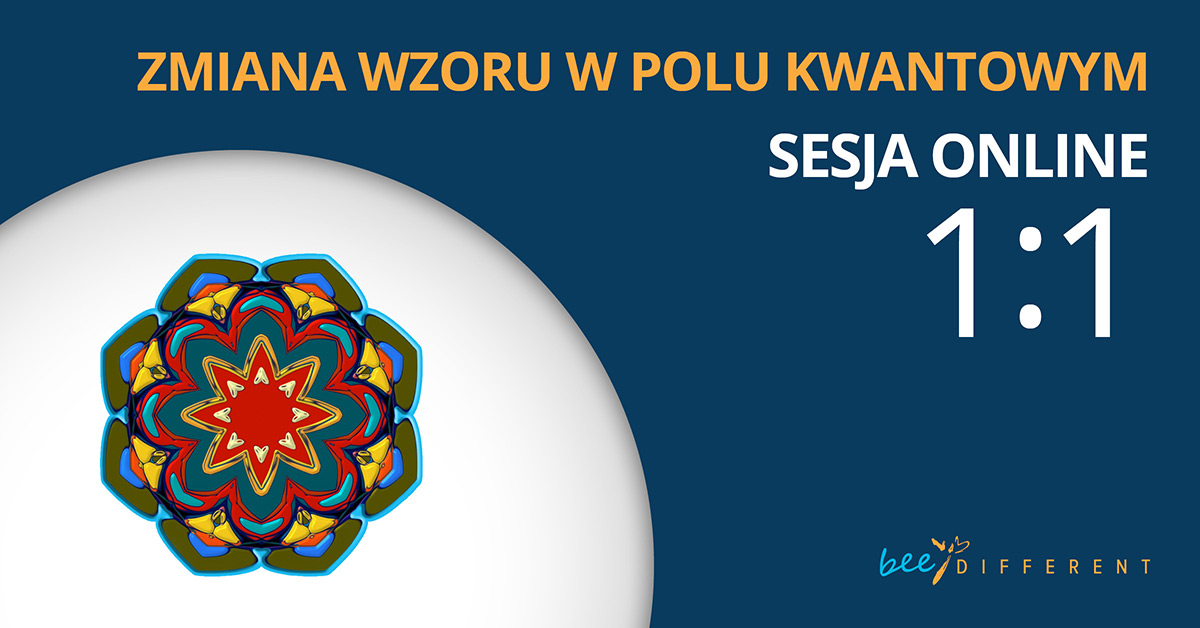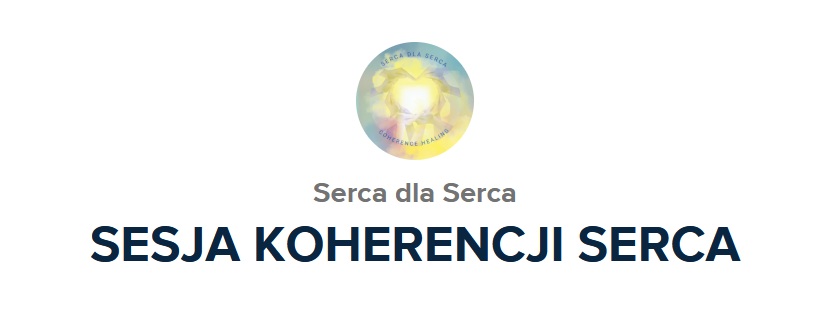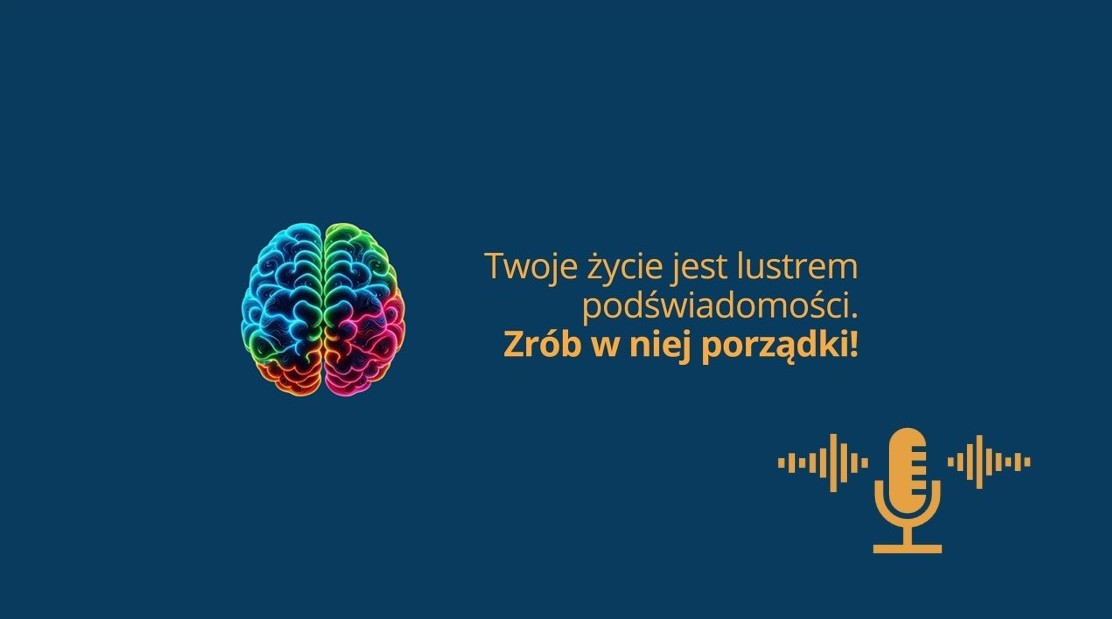

In mid-November I was in Sweden to take part in the next edition of IntraTeam conference on intranets and digital workplaces. Earlier I’ve taken part in the edition of this event in Copenhagen twice and now I’ve visited Sweden for a change. I’m an independent internal communication consultant in Poland. On daily basis I support companies in improving internal communications, and to do it effectively I also follow foreign solutions. Hence my trip to Sweden.
Over 100 people from 13 countries took part in the second edition of IntraTeam Event 2019 in Stockholm. Read what I learned there. I have 6 lessons for you and the issues I’ve picked appeared in many presentations.
This blog post is also available in Polish here.
1. More than enough!
There are too many attractions and opportunities around. We’re still distracted, overstimulated and overloaded with information.
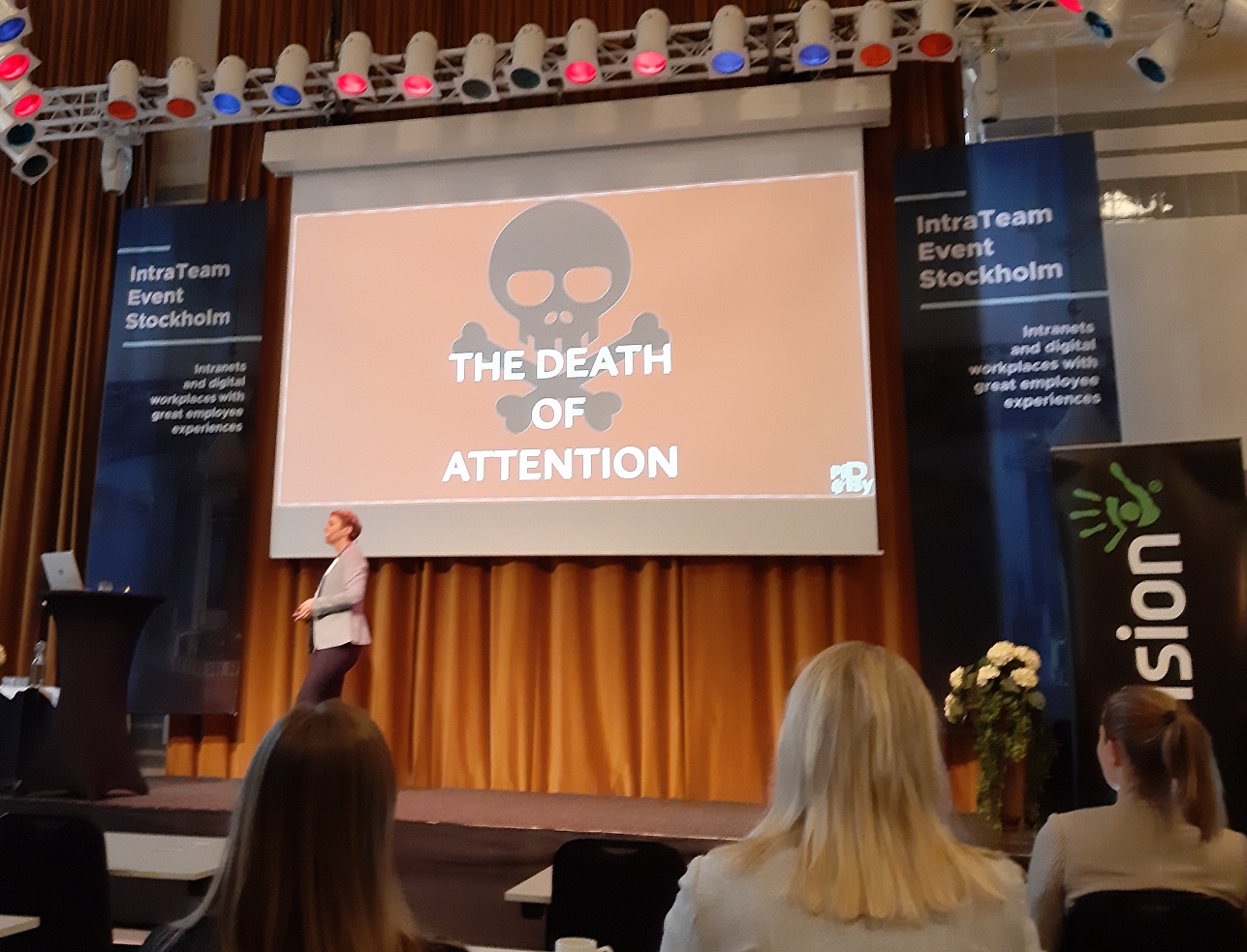
As Jane Piper from Pipsy company based in Switzerland nicely put it, we are ‘24/7 always-on culture’, i.e. non-stop online. Our brains aren’t ready for that. We sit over emails that bring little value in relation to the time we devote to them. Our stress level increases while productivity decreases. Therefore companies are introducing rules to counteract that such as the following ones:
• 4-day work week,
• no emails after working hours,
• no multitasking,
• reducing time spent on meetings,
• or introducing undisturbed time to complete tasks.
You will find a quick quiz below that we also did in pairs to determine at what stage we are. And how is it with you? How did you do?
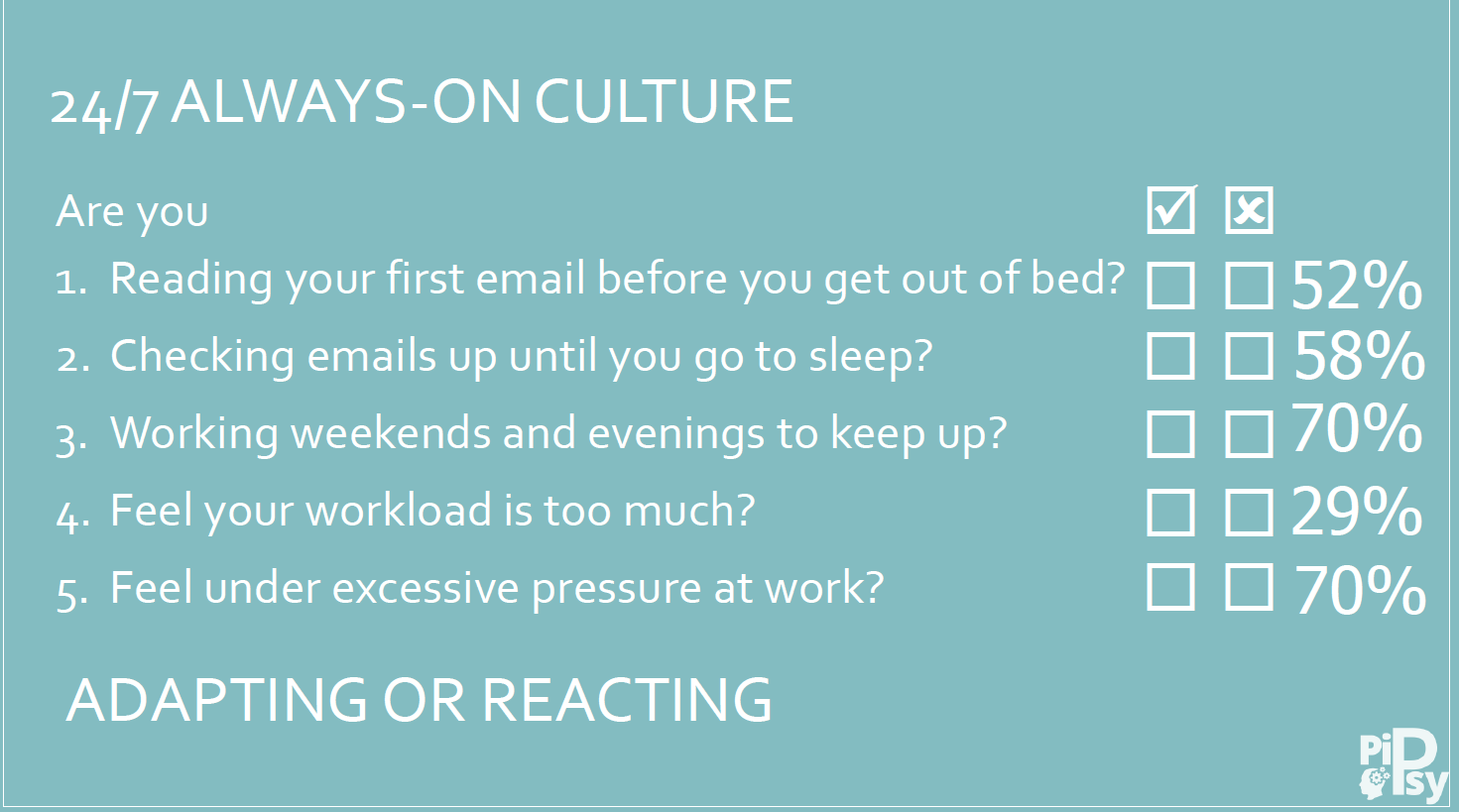
To my horror, I answered ‘yes’ to most of the questions, while my acquaintance – Jeel, always gave a negative answer. In the course of a short discussion, we recognized that it’s influenced not only by what we find at work (e.g., the number of tasks assigned to us or the organizational culture in which we work), but also our approach to it. So you can’t blame everything on the environment.
2. Content is king, but reduced, updated and owned
Unfortunately, our activities in internal communications often fit into this distracting trend. Frequent central emails sent to employees, pop-ups on computer screens or notifications from the intranet are just a few of the examples. One of the possible solutions to counteract this may be to take care of the content we serve to our employees.
An interesting example was presented by Simon Scott-Kemball of Belgian Eurocontrol. When the company launched changes in the intranet in 2009, half of the employees used it every day and 50% of them were satisfied with its capabilities. There were 20,000 documents on the intranet then and 6,000 pages on three platforms. The changes were introduced in accordance with the principle that less is more. The focus was on reducing the amount of content, improving its quality, engaging the content owners and listening to the users' needs.
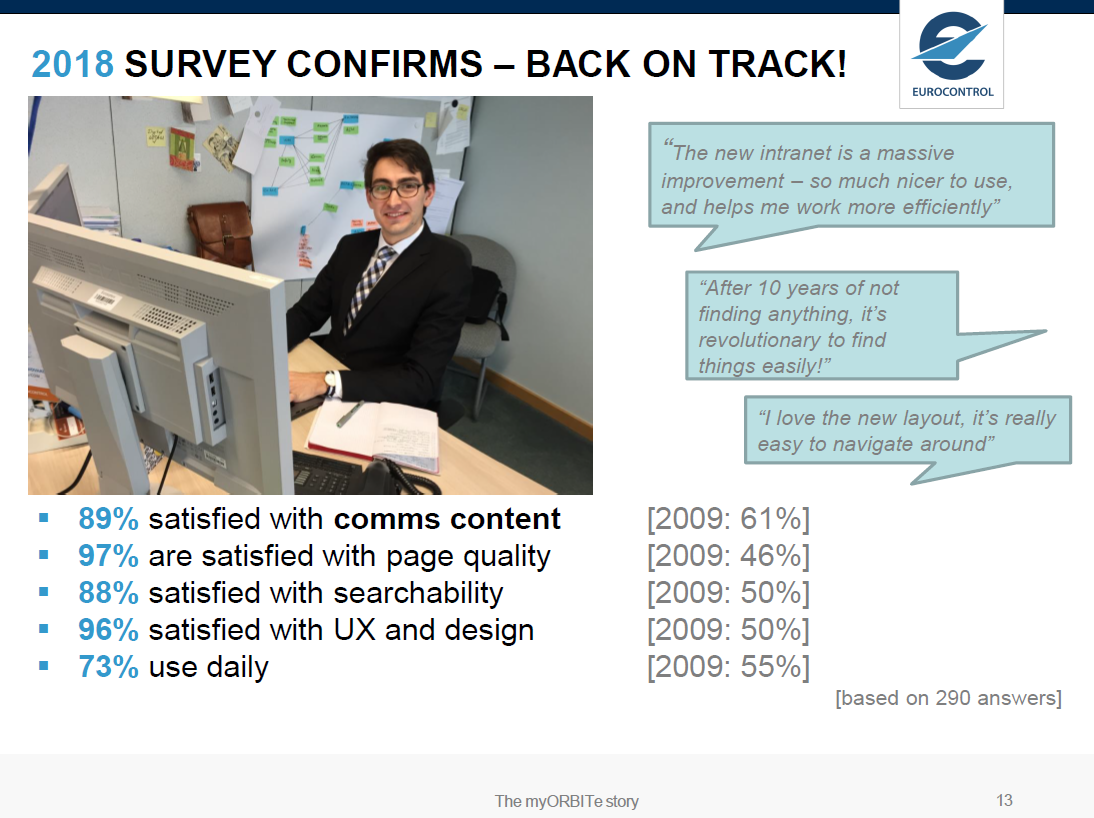
From Simon's presentation - pay attention to the second opinion on the right - finally!
The number of pages was reduced from 6,000 to just 360, the number of documents from 20,000 to 1,900, the search engine was improved (from 70% of incorrect search results to only 10%). Interviews with employees were also conducted, asking what they wanted to have on the intranet, why the content owners weren’t active and didn’t care if the content was up-to-date, and what problems the users had.
After the changes, all pages have assigned owners, all documents are tagged and named. Additionally, the content is updated twice a year by asking owners whether the data is current.
What effects did these changes bring? In the study employees said that:
• 73% use the intranet every day,
• 89% are satisfied with changes in terms of content,
• 88% are satisfied with search engine operation,
• 96% positively assess UX and design.
Great results! Conclusion: less content, but tailored to users' expectations (just don’t guess what they need – ask them), content should be regularly updated and have responsibilities assigned.
3. An efficient search engine is essential
Content is important but it doesn’t matter if we take care of it if the search engine spoils our efforts. Anne Kotila of Caverion Corporation from Helsinki talked a lot about the importance of content (they also have the content owners and email reminders about the need for updating it), but also about a good search engine.
Unfortunately, I couldn’t take a picture of this solution because Anne showed the search engine operation not on the screen shots in the presentation, but live on their intranet and asked not to take photos. What I’d like to pay attention to and what I really liked was a small, simple solution for search suggestions.

Intranet of Caverion (from Anne’s presentation)
When you type a word or phrase into Caverion intranet, you see 3 different icons on the left that suggest whether the content relates to a person, a page or a document. Thanks to this, it’s easier to find the element we look for because if we want to find, e.g., a contact to a person and enter the name into the search engine, we won’t choose a page or a document from the hints, only a hint with a figure of a person, which suggests that we find the searched data in the organizational structure. At least that's how I interpreted these icons.
4. The management is the key to digital transformation
Another key to successful digital transformation is called the management. This conclusion appeared in many presentations.
As Lee Bryant of Postshift underlined, transformation to digital workplace is only possible with the commitment of the management. Unfortunately, it’s often the case that we have business processes with access to the 21st century internet, managed with processes from the 20th century, while the management principles are the remainder of the 19th century. You know it, right? The biggest obstacles are immaturity of leaders, bureaucracy and the top-down approach.
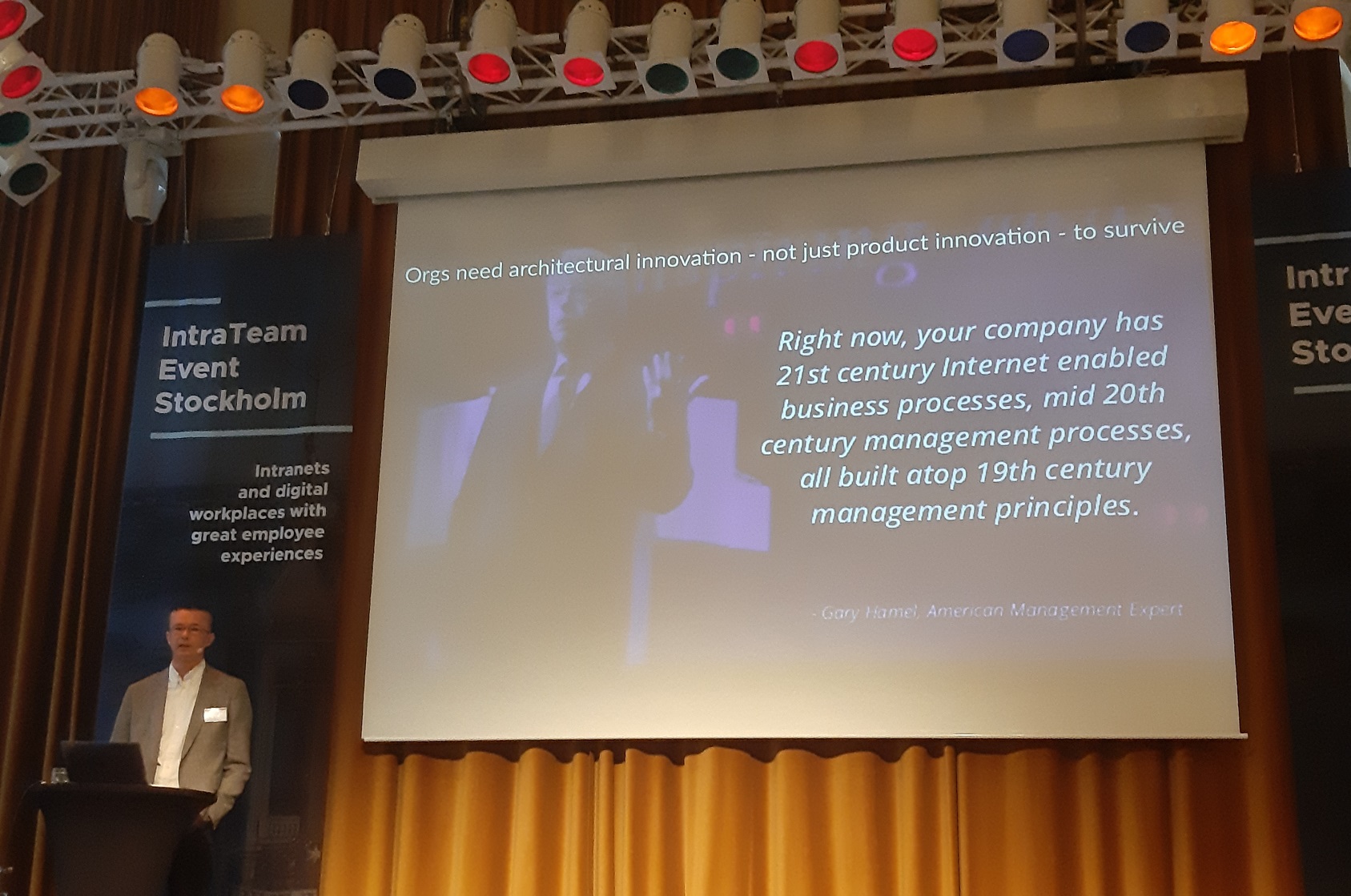
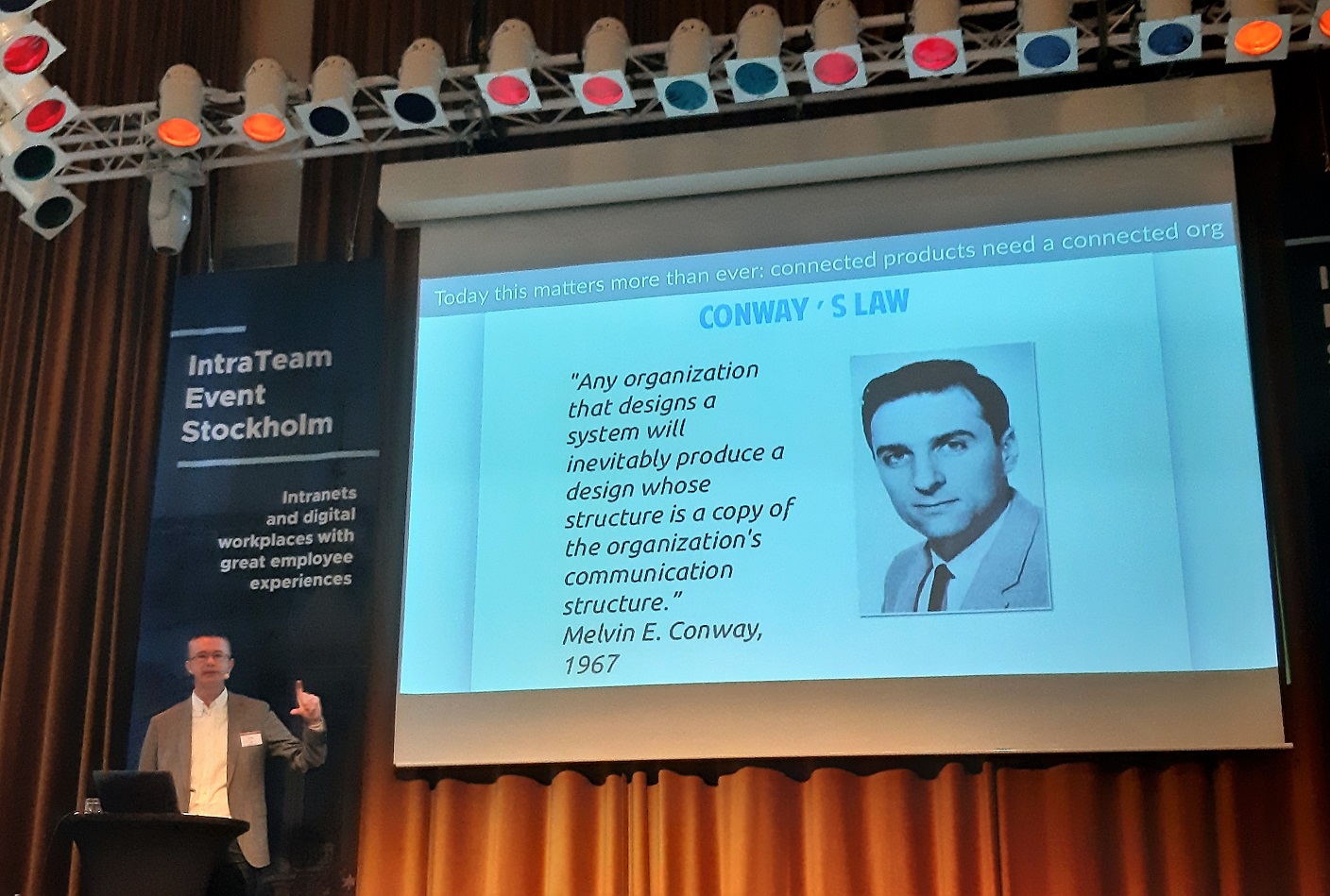
What can help us move away from that is agile, where we find rules such as putting people above processes, cooperation above cascade or leadership above management. According to Lee, we don’t demand enough from our leaders. And I would also add here that we focus too rarely on them and too much on tools, which is why I often repeat during the trainings that people are also internal communication tools, however, it doesn’t sound nice.
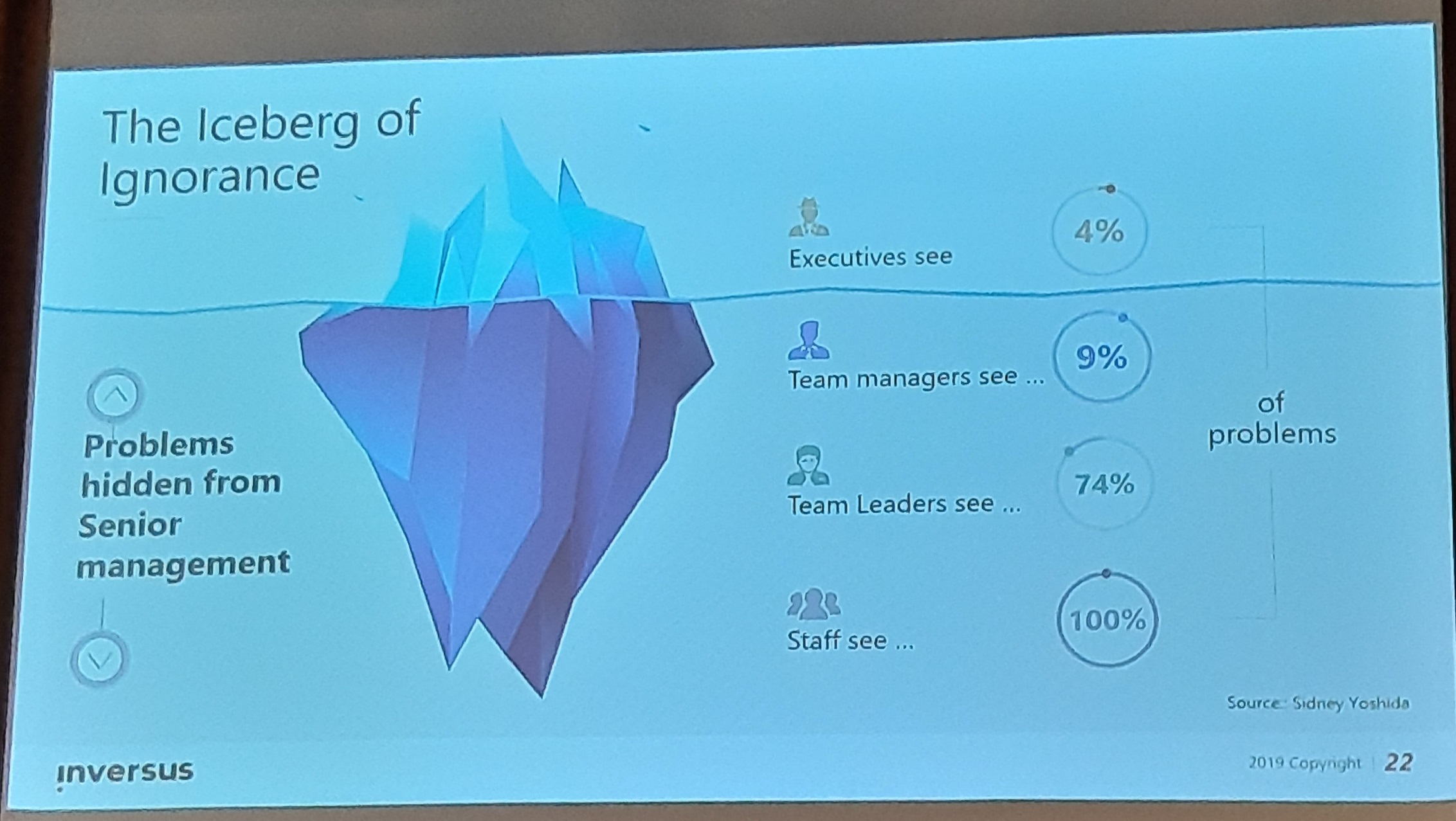
Jonas Bladt Hansen of the Danish company Inversus contributed to that idea. According to him, our executives see only 4% of problems in the company, team managers - 9%, team leaders - 74% and our employees - 100%.
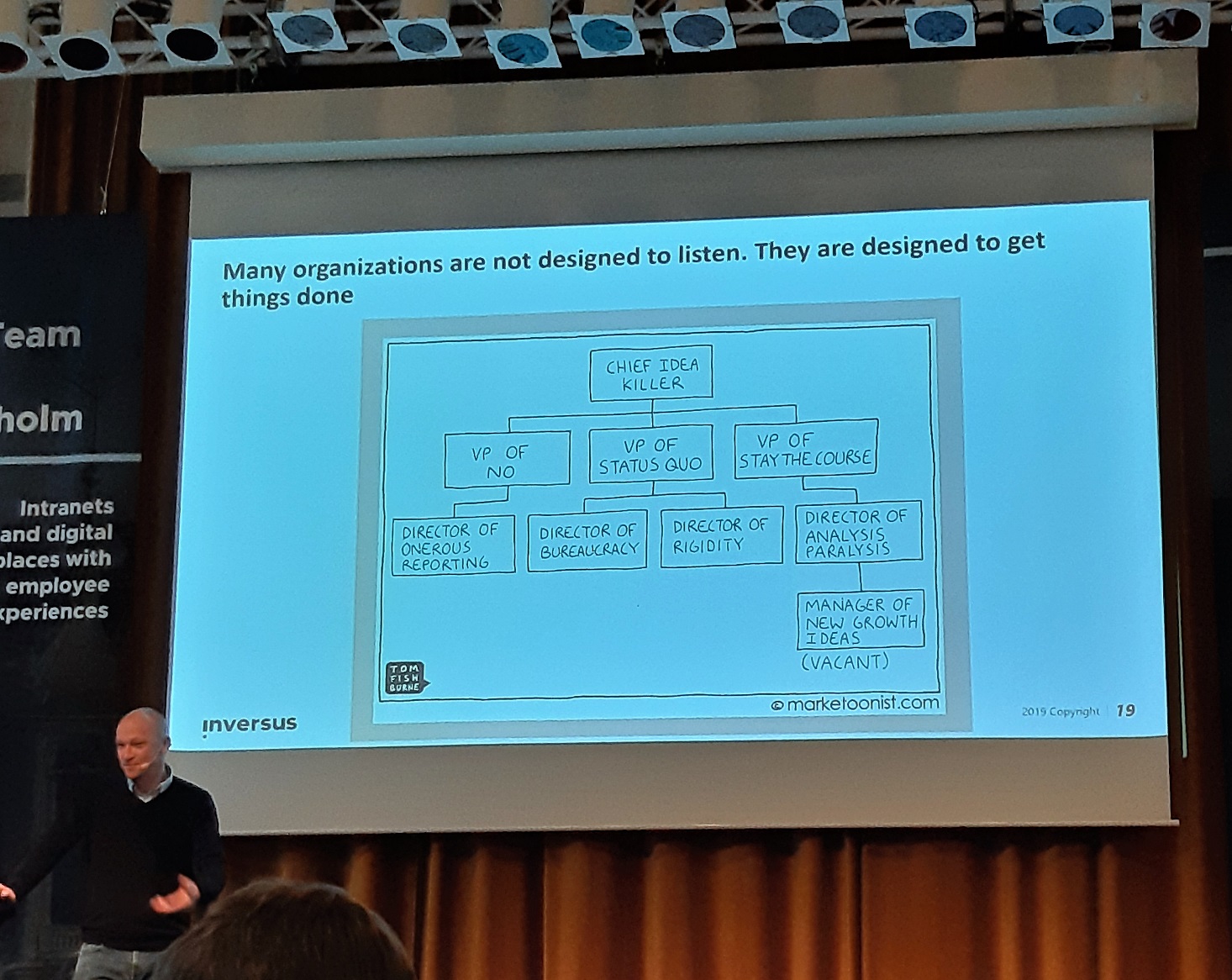
Companies aren’t prepared to listen and are headed by Chief Idea Killer (from Jonas's presentation)
The results of the benchmark study presented by Kurt Kragh Sørensen of IntraTeam also say that it’s worth involving the management in digital transformation. (Remember that you can evaluate your intranets for free as part of the benchmark offered by IntraTeam - you can find more information on my blog in Polish here, and if you are from outside Poland - visit Kurt's website here for details in English).

The results of this study have shown that the top management is more likely to support digital workplace than mid-level managers, and that's where the problem is - in this uninvolved group. The results have also shown that people who took part in this research and were supported by the top management:
• indicated cost reduction after the implementation of intranets 6 times more often than those who didn’t have such support,
• 2 times more often referred to employee education,
• 5 times more often said that their digital solutions are to support business strategy.
A similar situation is in Electrolux, which was represented at the conference by Ralf Larsson. In this company, digital transformation is a part of their business strategy. Ralf suggested how we can easily begin the commitment of the management to get it started. This is a 1,2,3 rule. Try to convince the management to publish 1 post, 2 comments and 3 likes at a defined time. This isn’t much but it can get the staff involved in communication.
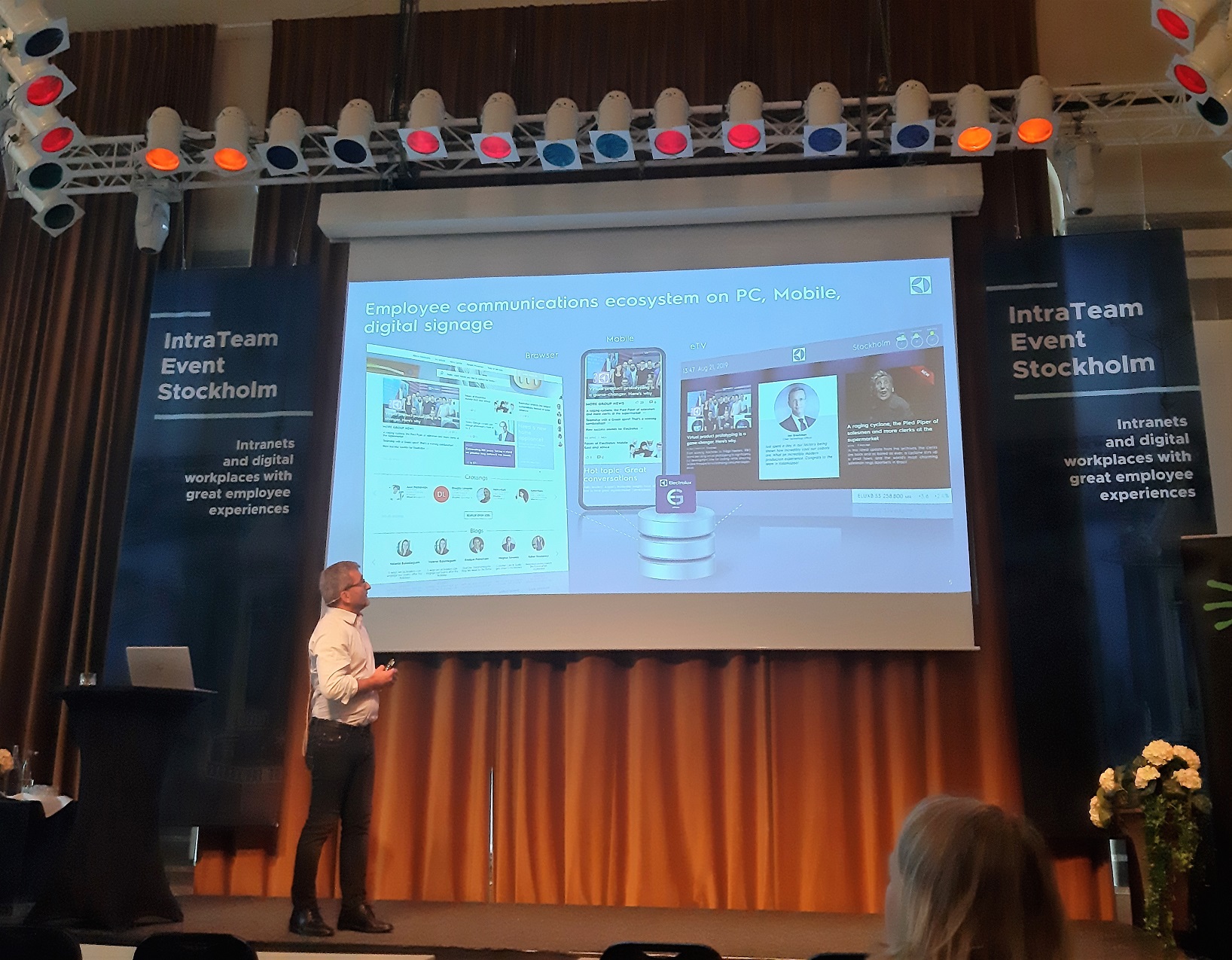
And this is how the intranet of Electrolux looks like (from Ralf's presentation)
However, we must remember that we can’t leave them without any support - education is essential. Tips, specific rules, webinars, trainings, direct communication - this should be included in our support for the management to encourage them to get involved.
Simple online checklists, such as the one proposed by Volvo, can also be helpful when we are overstimulated (because they help focus on the next steps) and they also help involve the management. Helena Keijser and Patrik Wallmoberg showed a checklist that is on their intranet. It was prepared for managers as the support in recruitment. Their managers can check off the tasks they have already completed, they can save the list and name it. It’s also visible in their daily tasks on the intranet. You will also find a similar onboarding checklist on the intranet in BorgWarner company on my blog - the post is here (in Polish).

Checklist for managers recruiting employees (from Volvo presentation)

And their intranet (from Volvo presentation)
5. Digital transformation is not a task for one team
If we want to undergo digital transformation successfully, we must not only involve the management, but also join forces. HR, IT, a business strategy and internal communications - these business areas appeared in several presentations.
Kurt of IntraTeam showed that in companies where intranet ownership was assigned to 2 teams this solution was more successful than when there were fewer owners. Joining forces of several teams to achieve a holistic approach to employee expectations was also described in the case studies of Volvo, Caverion and Electrolux. Then it’s also easier to define benefits for an employee, a team and larger groups to encourage them to use the solution. As Ralf of Electrolux said, ‘We didn't just launch an intranet, we introduced new ways of working smarter together.’ And I will add: don’t tell employees about the tool but what this tool can do for them, how it can help them at work.

Barry Byrne of Irish Defense Forces (IDF) also talked about this issue. He even called it selling benefits. In IDF they chose improvement in productivity and saving time as important benefits of implementing their new intranet. Barry estimated that 50% of employees will save 2 hours a year thanks to this solution. Do you think it's not enough? Then count how much it costs. Provident in Poland did the same to convince the management board to implement the new intranet (an interview with Provident is in Polish on my blog here).
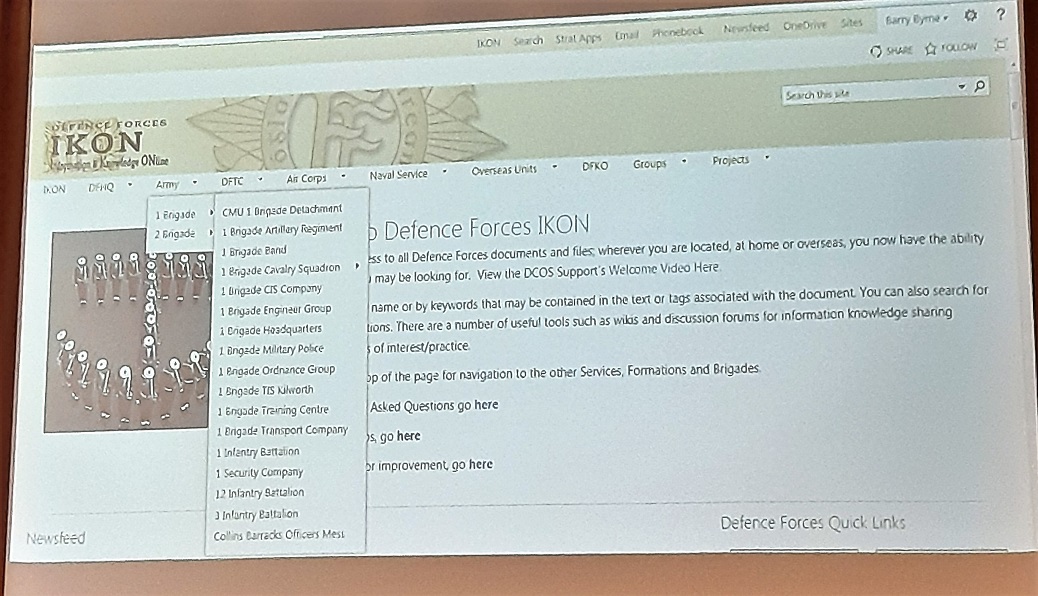
Irish Defense Forces intranet (from Barry's presentation)
When Barry then asked the employees in the survey about the time savings they gained after implementing the new intranet, as many as 42% of them declared saving 3h per week and 36% of them - 1h per week.
Let us remember the benefits of communicating the solution already at the stage of convincing management boards.
6. Yes to chatbots, but small and simple
Finally, the topic that is still in the categories of technological innovations in internal communications. This is the chatbot presentation that I was waiting for a lot.
Frank Giroux of Bayer, the company that strongly focuses on chatbots, pointed out to the fact that most of the responses were on the intranet but employees couldn't find them. And that’s where the chatbots, which they are still working on, came in. But what is important when using this solution is Frank's hint not to create a bot that will do everything. A large bot for all topics won’t work, not yet at this stage of the development of this tool. If you opt for bots, it’s better that they support only selected topics. So it's worth narrowing their answers to specific topics. Keep it small and simple.
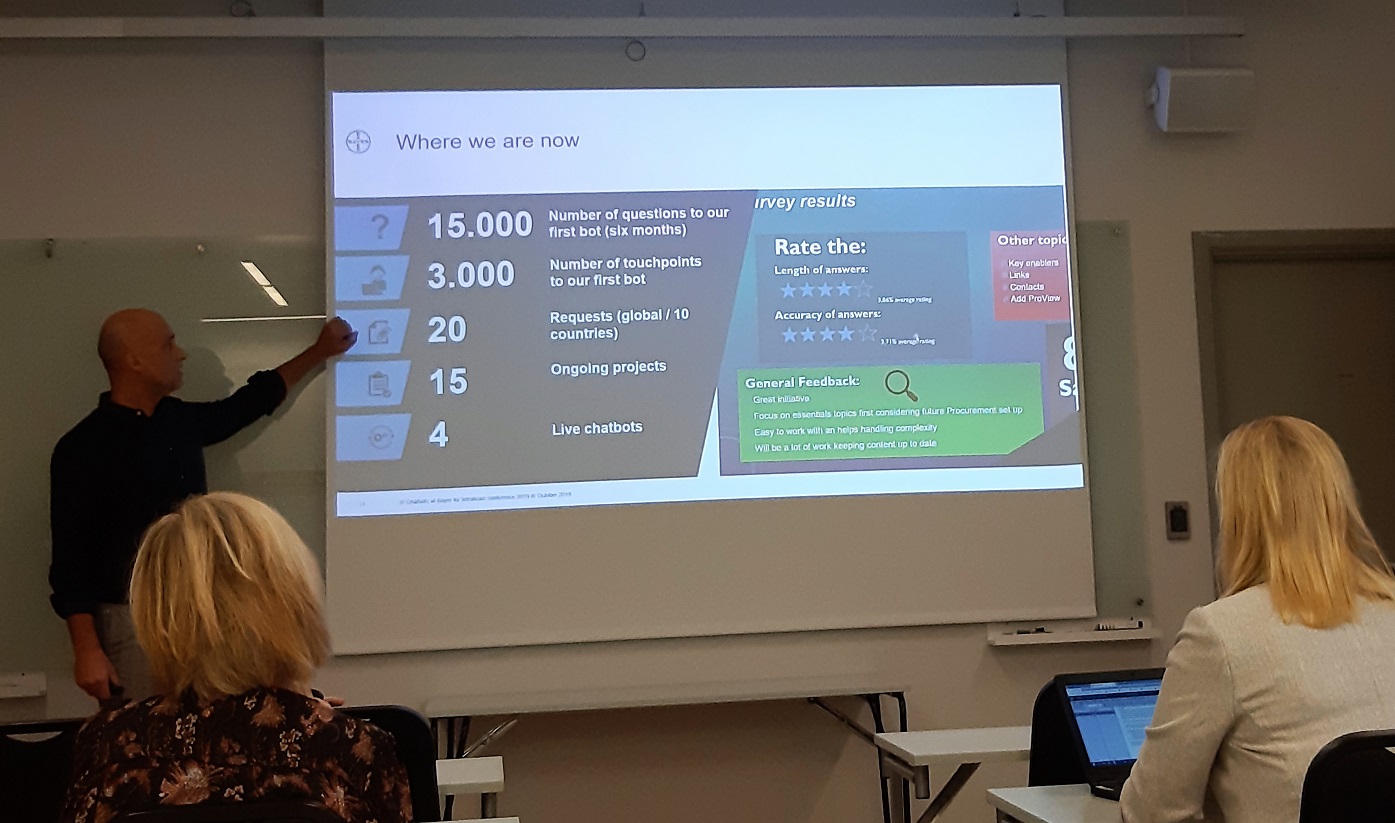
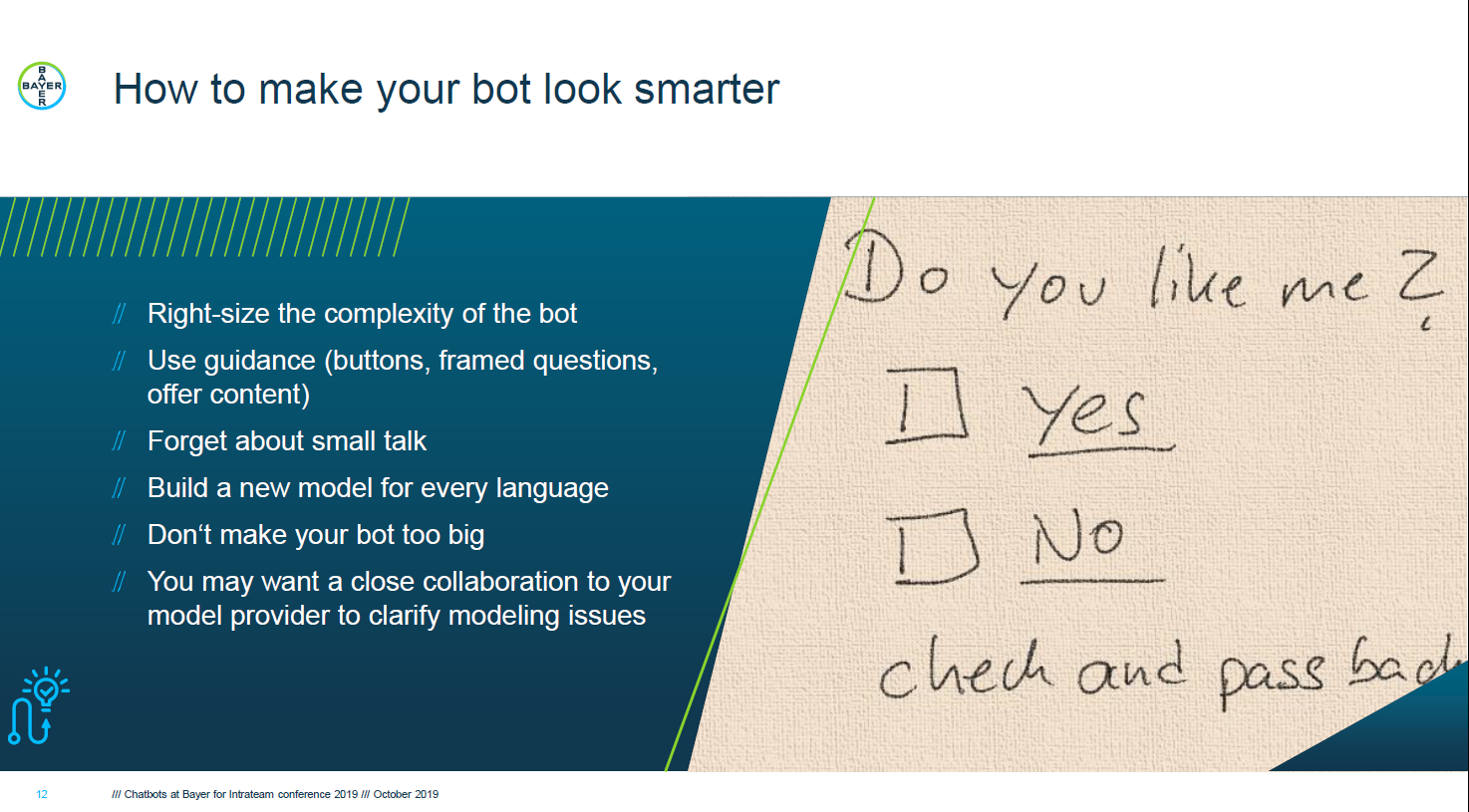
Tips for implementing bots from Frank's presentation
And as Frank emphasized during his lecture - bots aren’t a quick win. Bots require constant teaching and are never a finished project. But as he showed, well-constructed, taken care of and still taught, they can be helpful and make more and more teams in the company want to try such a solution.
These are my lessons from this conference. Remember that the blog has a lot of space for your lessons on communication events, interviews about your projects or simply a blog post in which you can share your knowledge and experience about internal communications.
My work & travel
During the trip to Sweden, I used my idea of combining work and travel again and planned a bit of sightseeing. I was able to meet reindeer in Skansen (the open-air museum), visit the Christmas baubles workshop, the chambers of the Royal Palace and several museums.
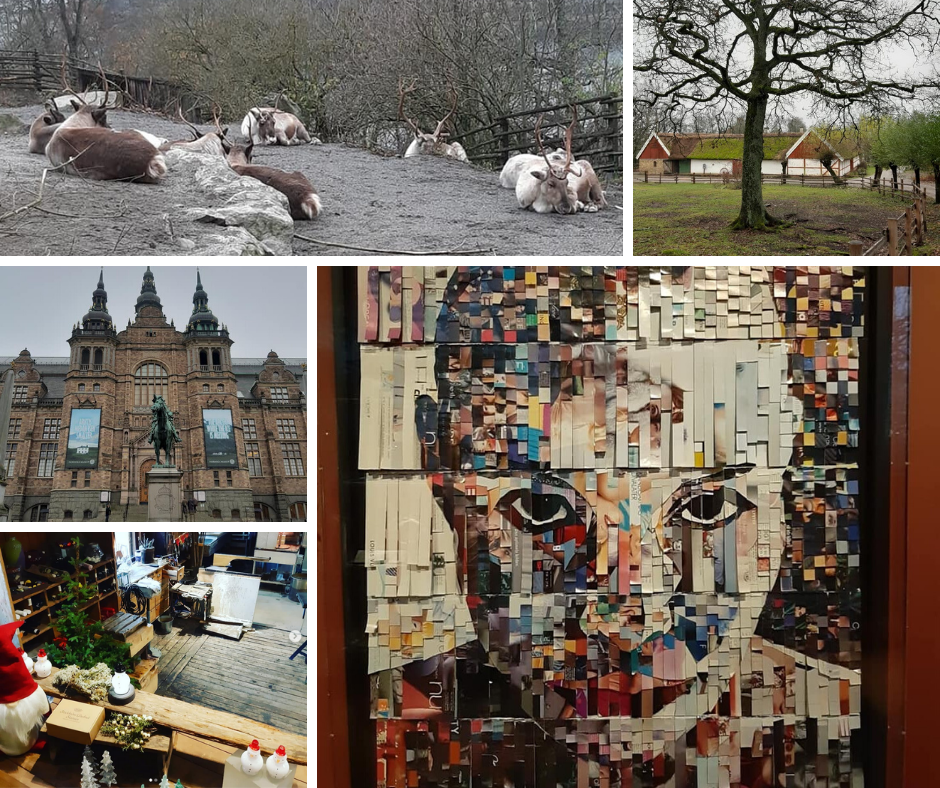
Your work & travel
The next IntraTeam conference takes place in Copenhagen in early March. This event is bigger than the Swedish edition, which is just beginning. Every year, over 200 people from over a dozen countries come to Copenhagen. And knowing Kurt, the CEO of IntraTeam, he will definitely prepare a nice discount for this event for you, just like this year. So follow the blog closer to the event to get the discount code. [EDIT: there is a special price for the tickets now - check the details here]
Photos: MB, presentations, IntraTeam





